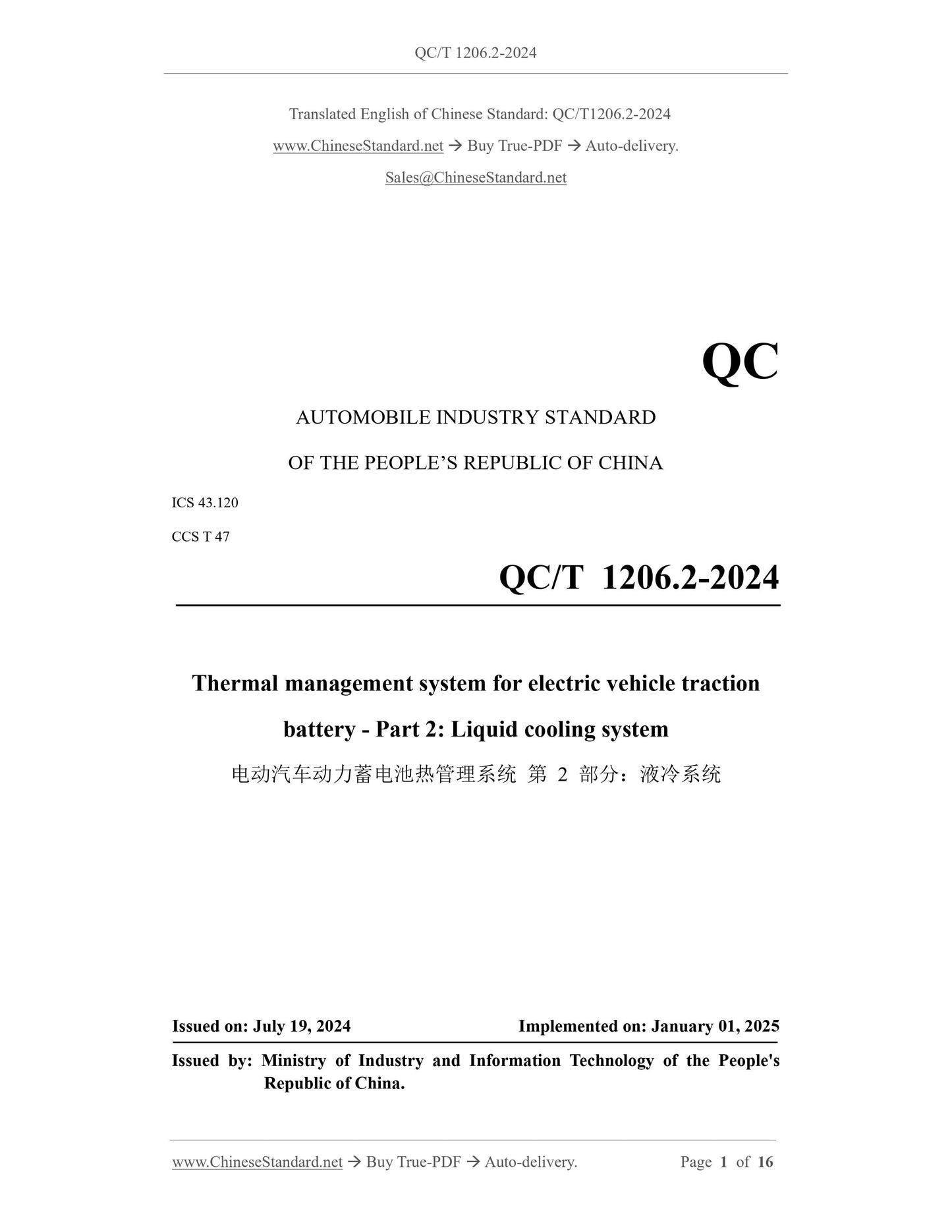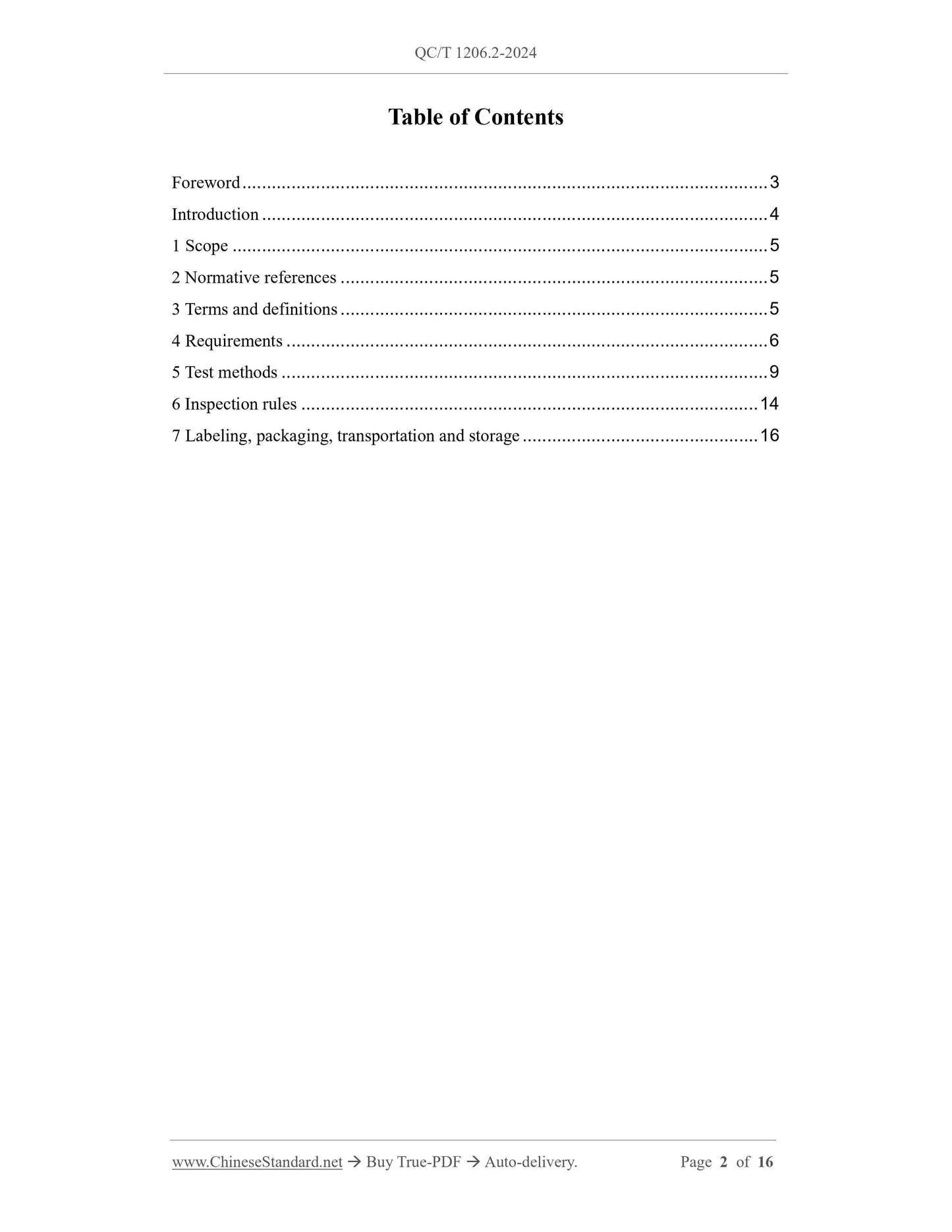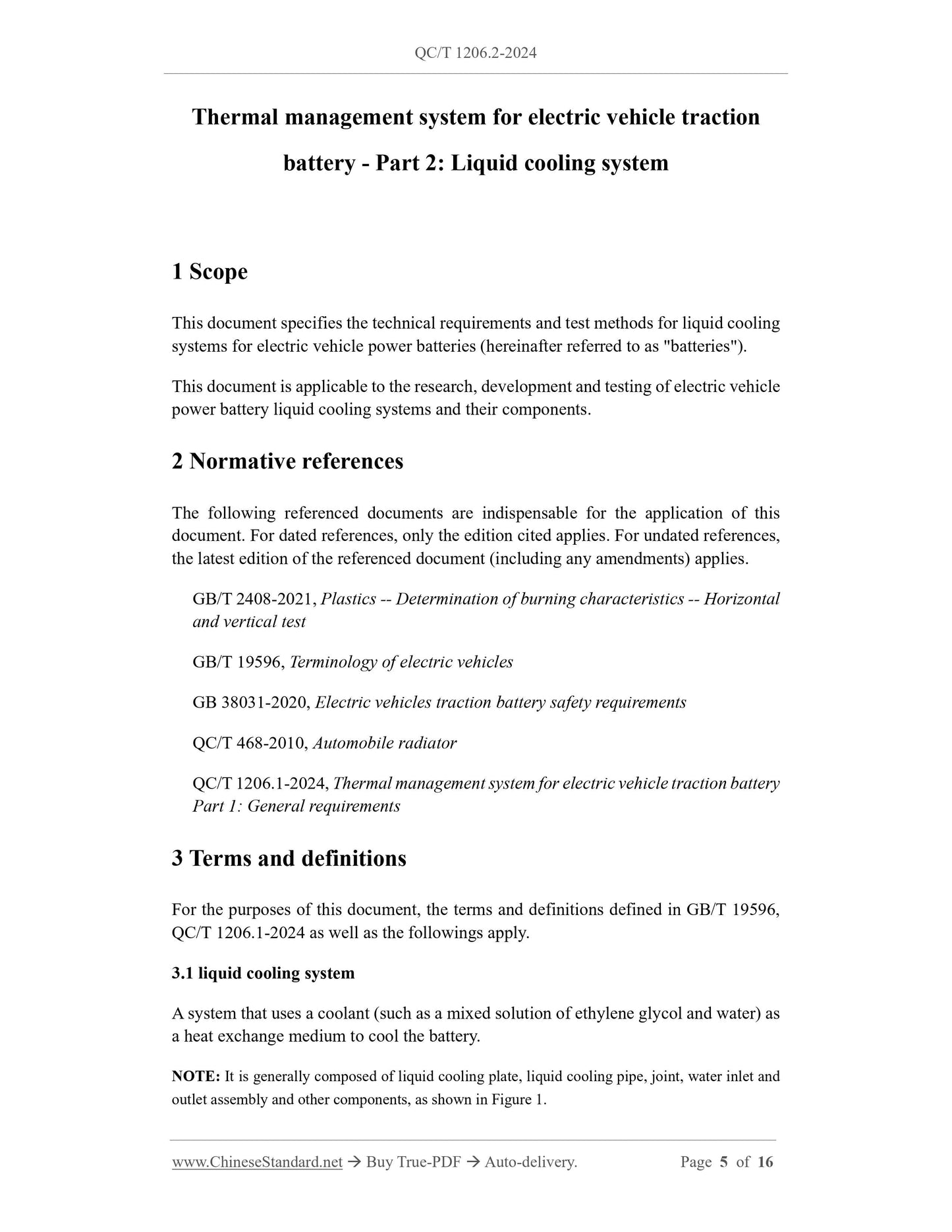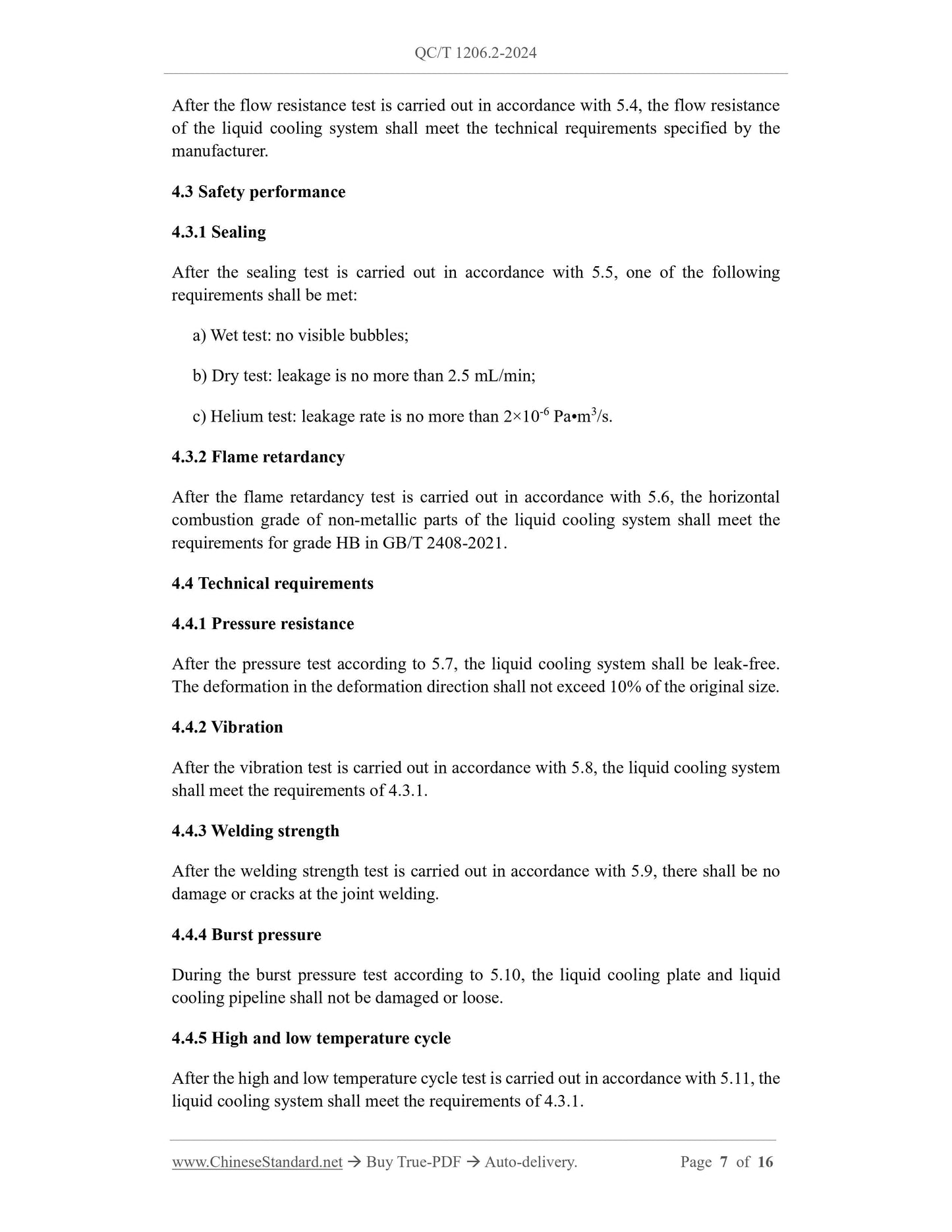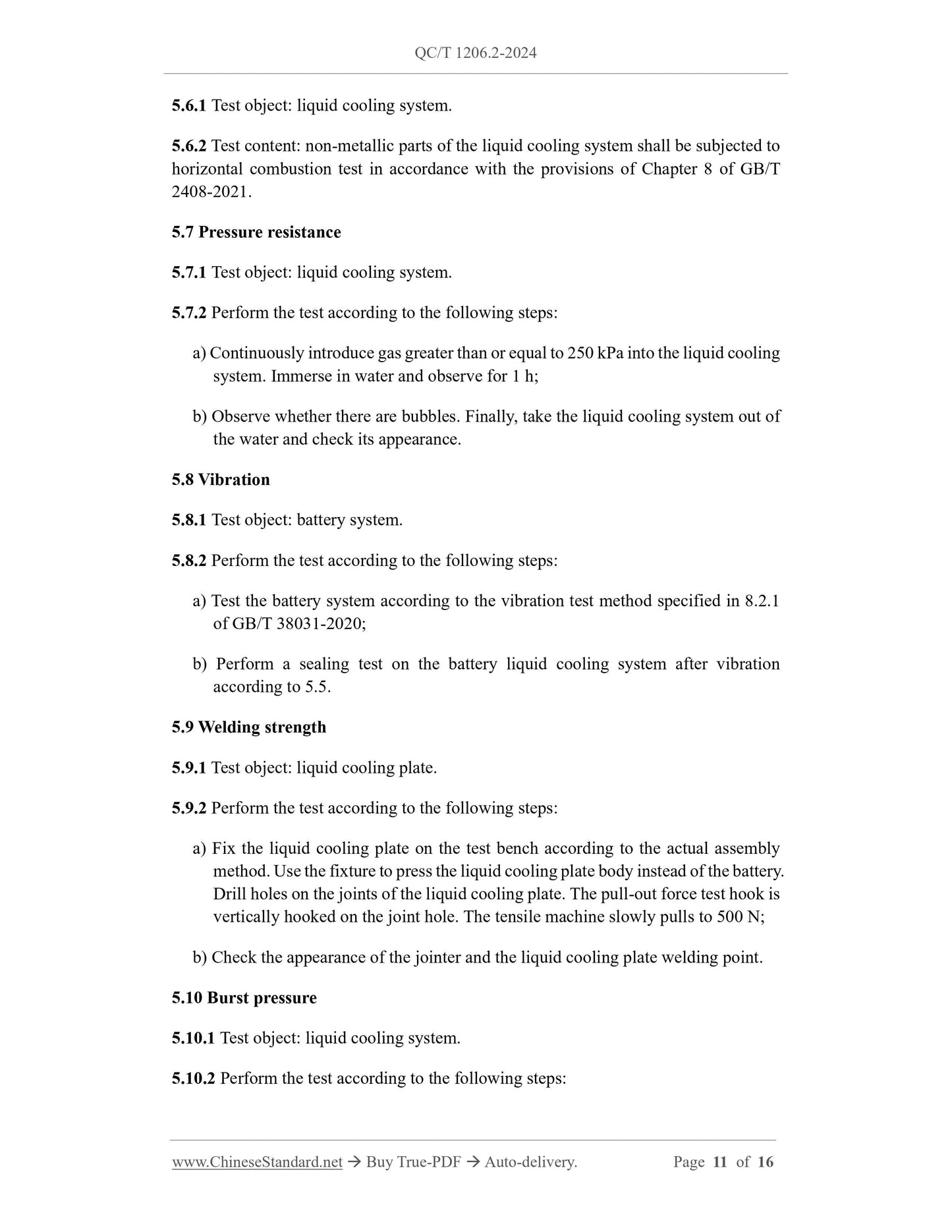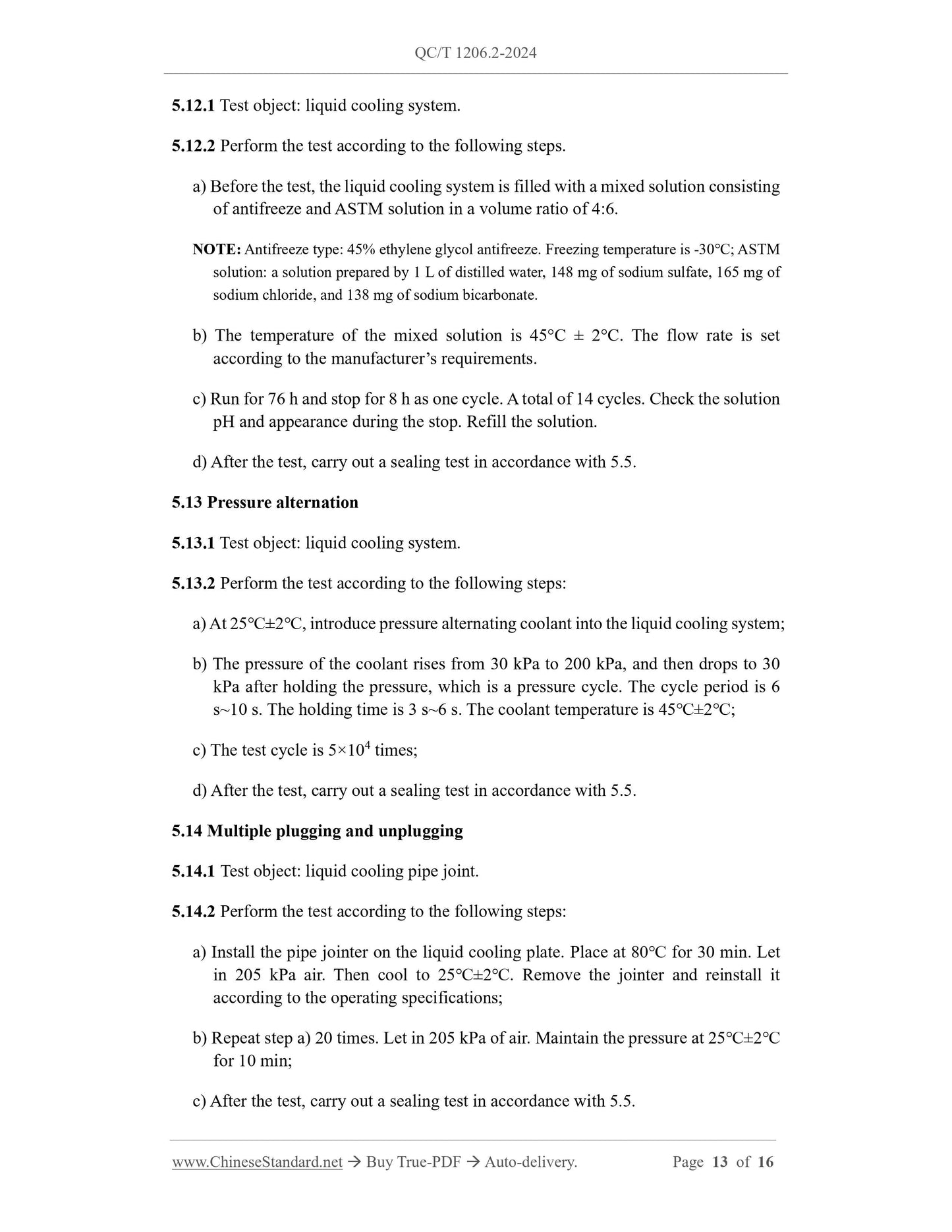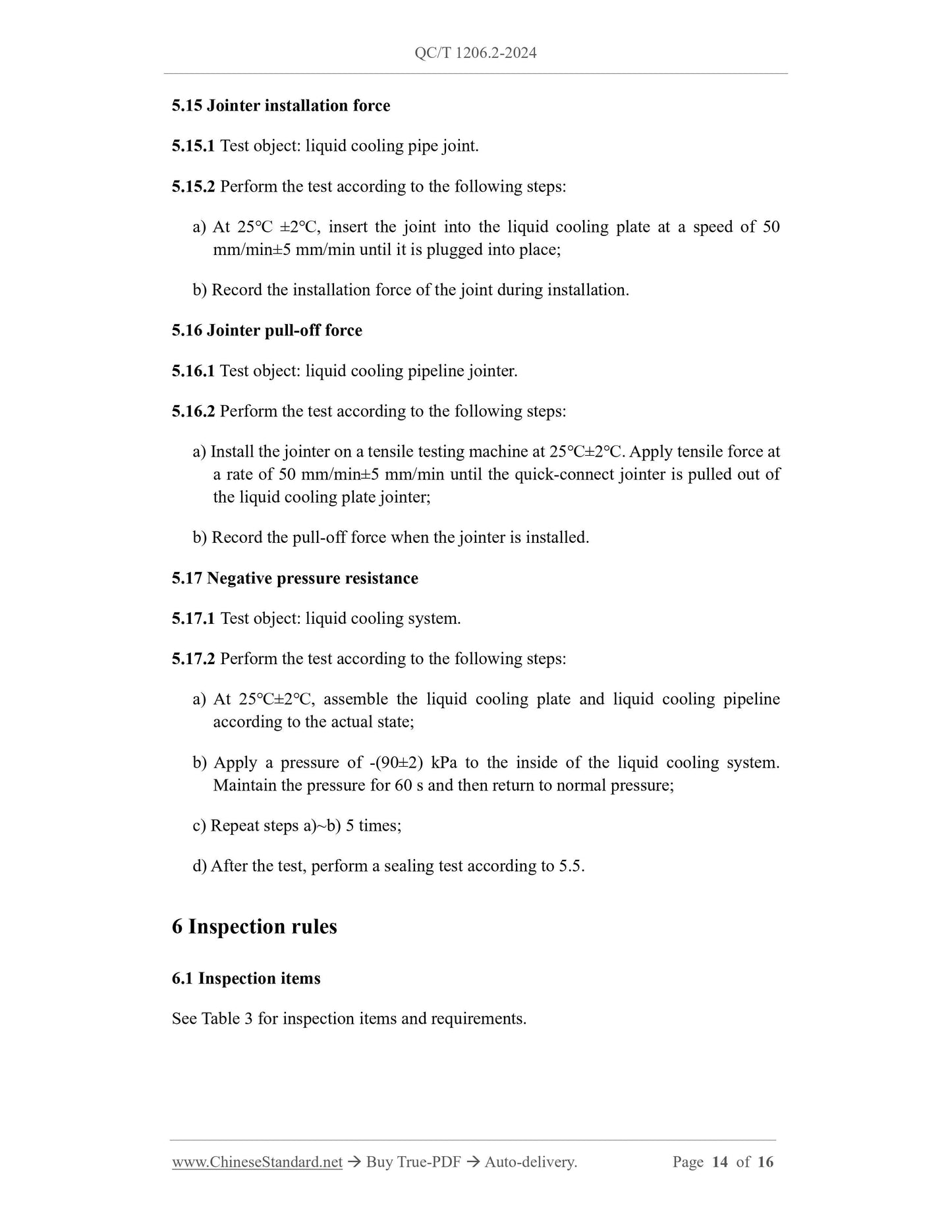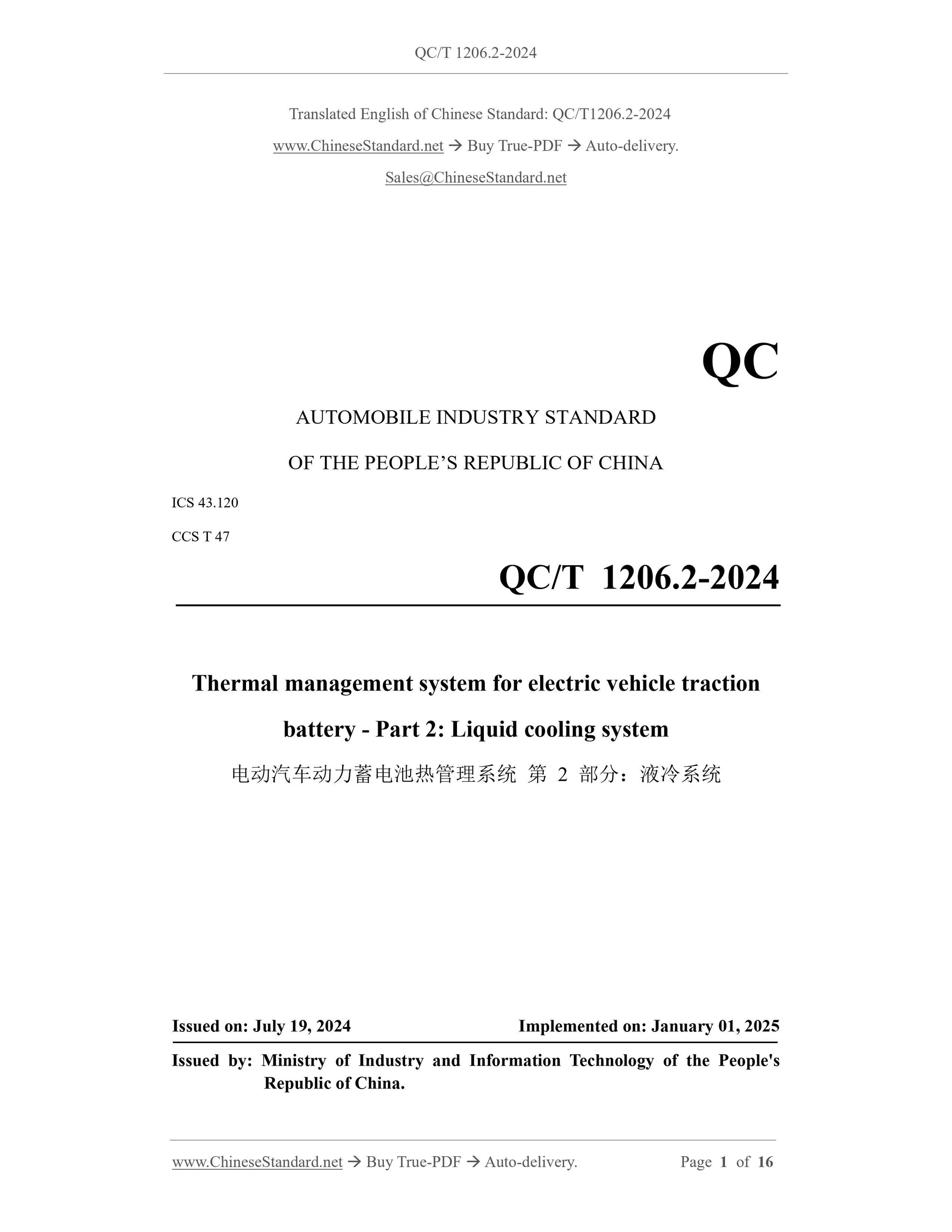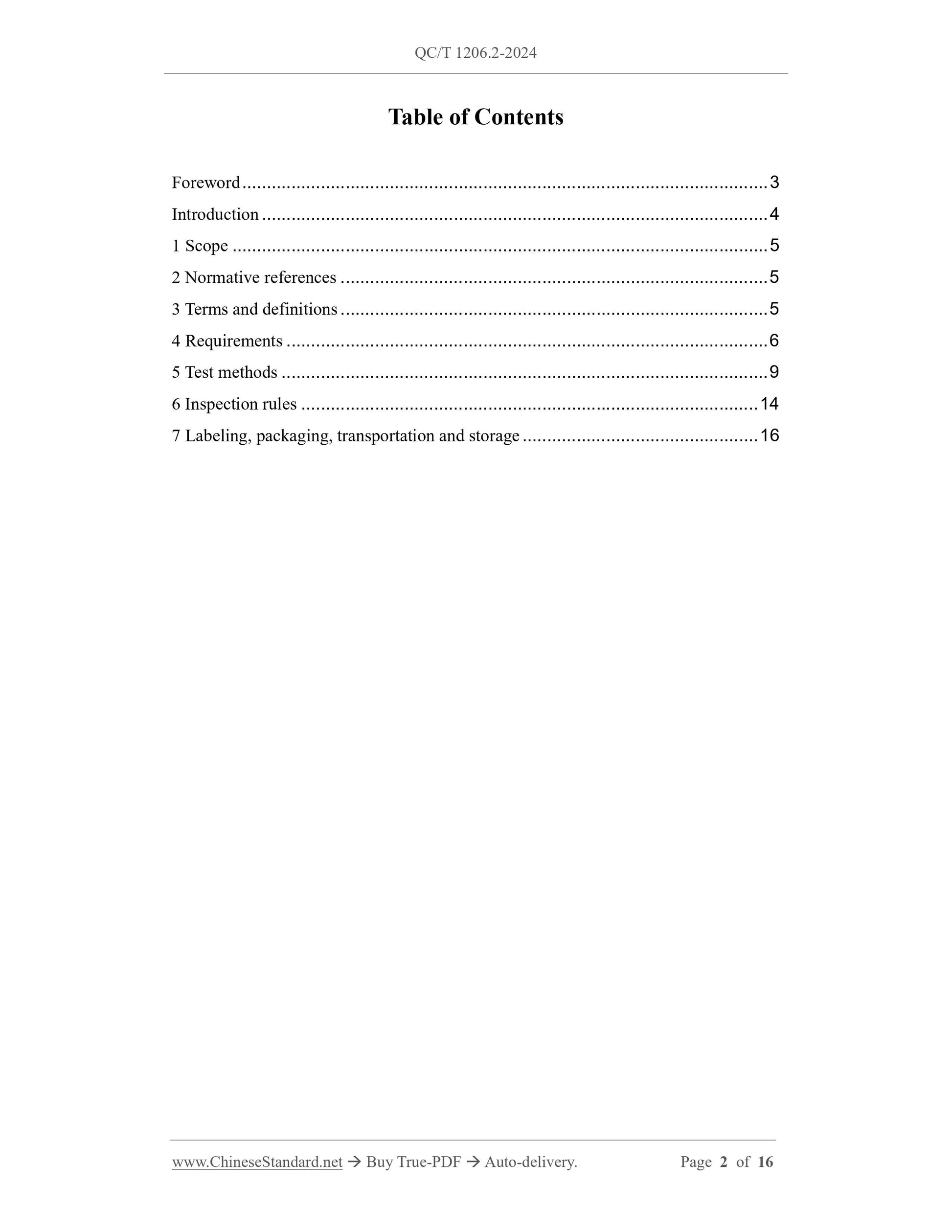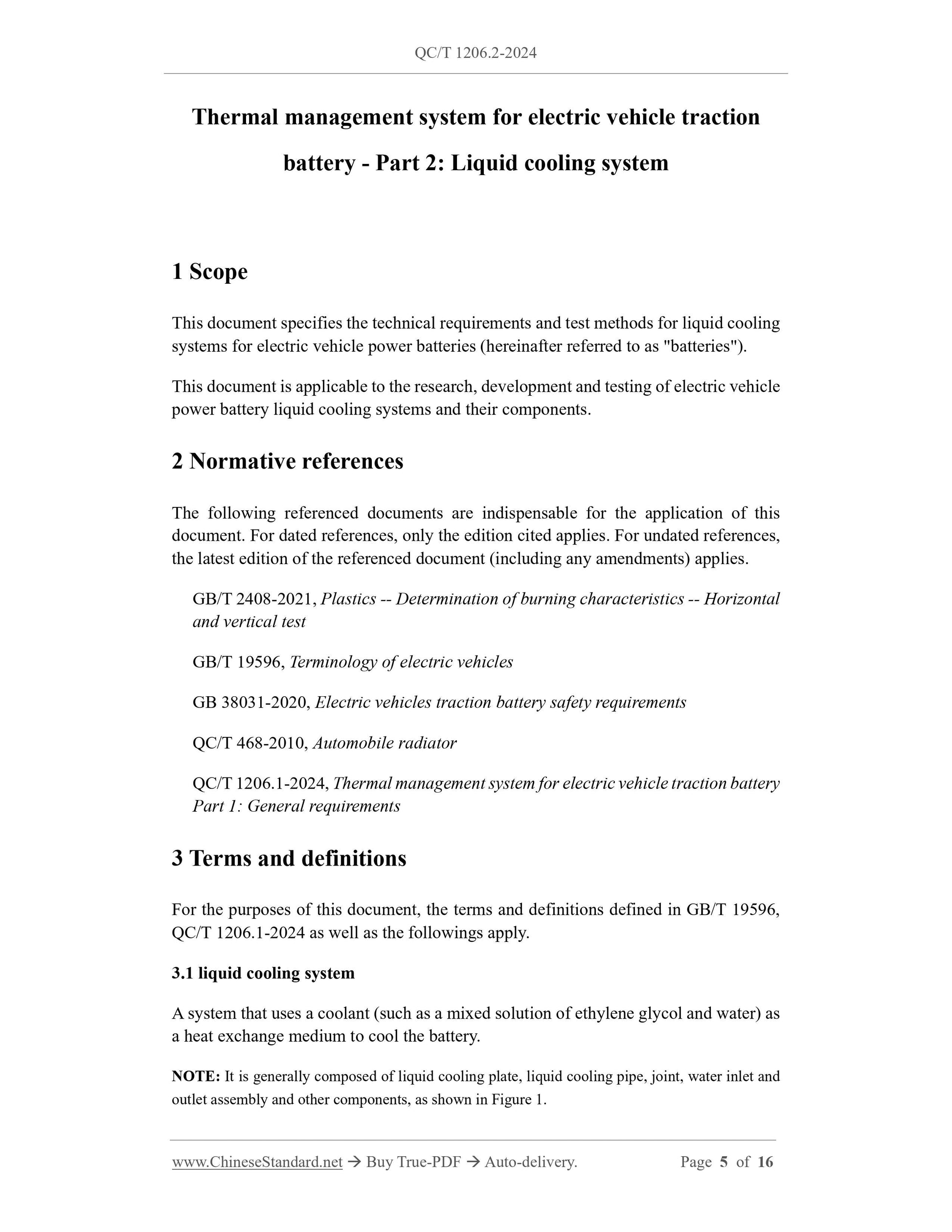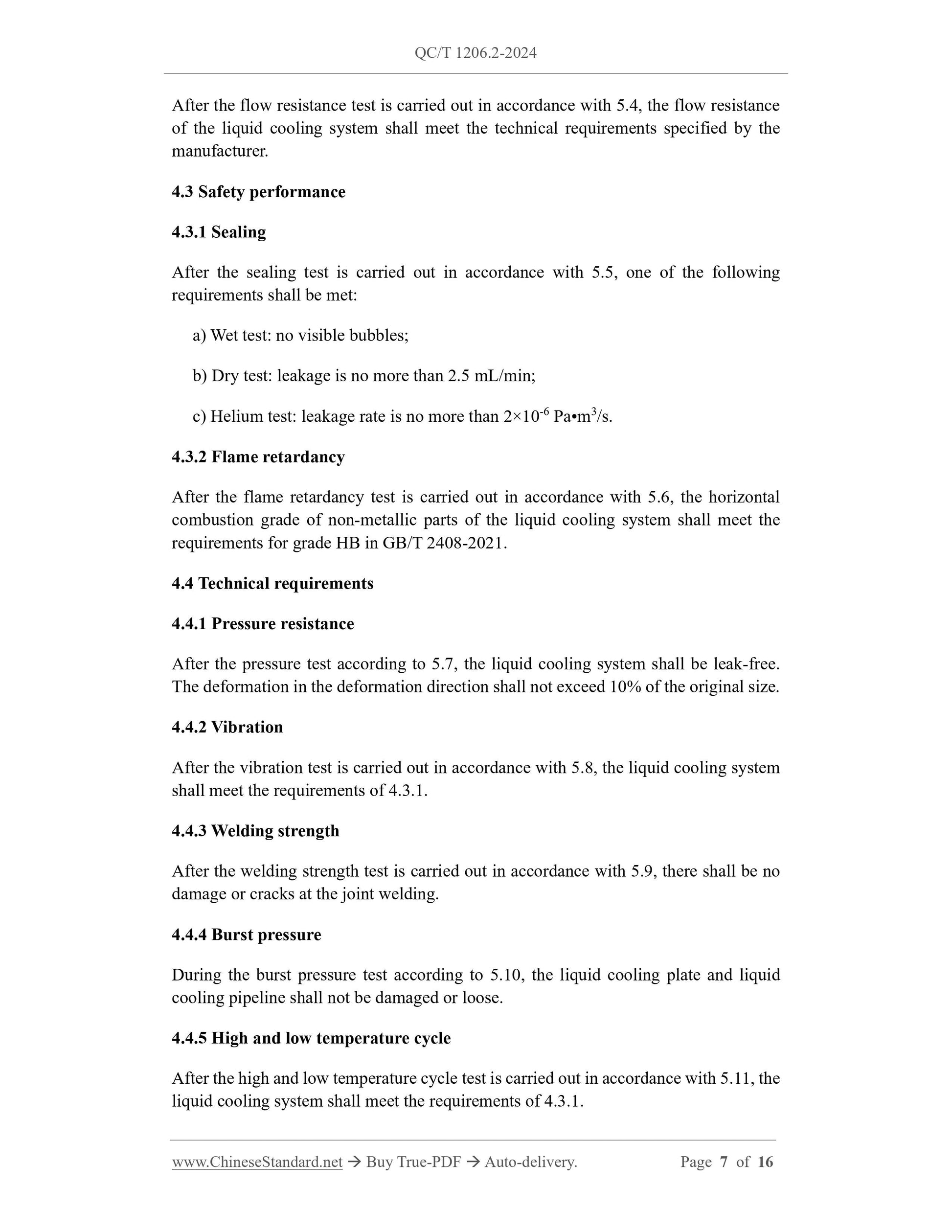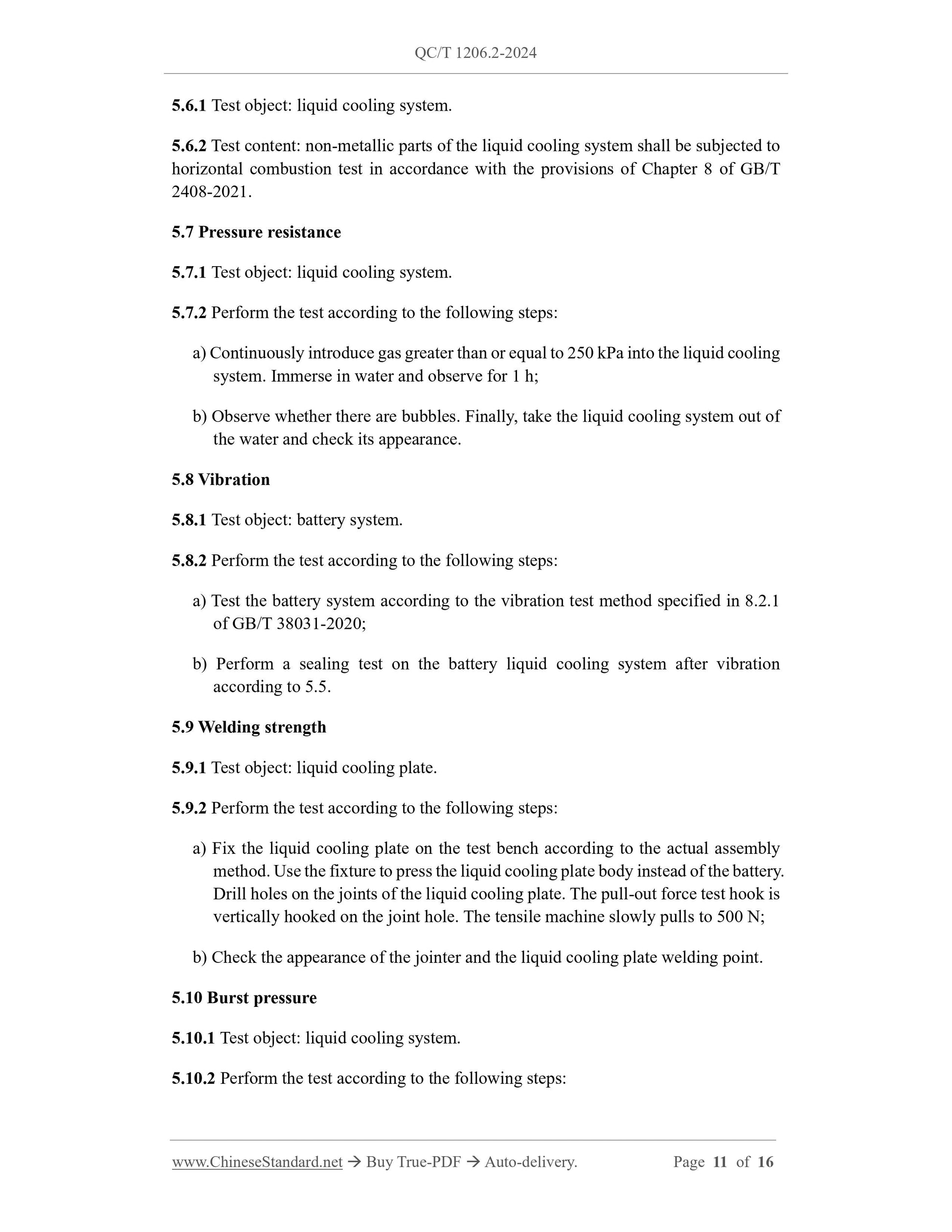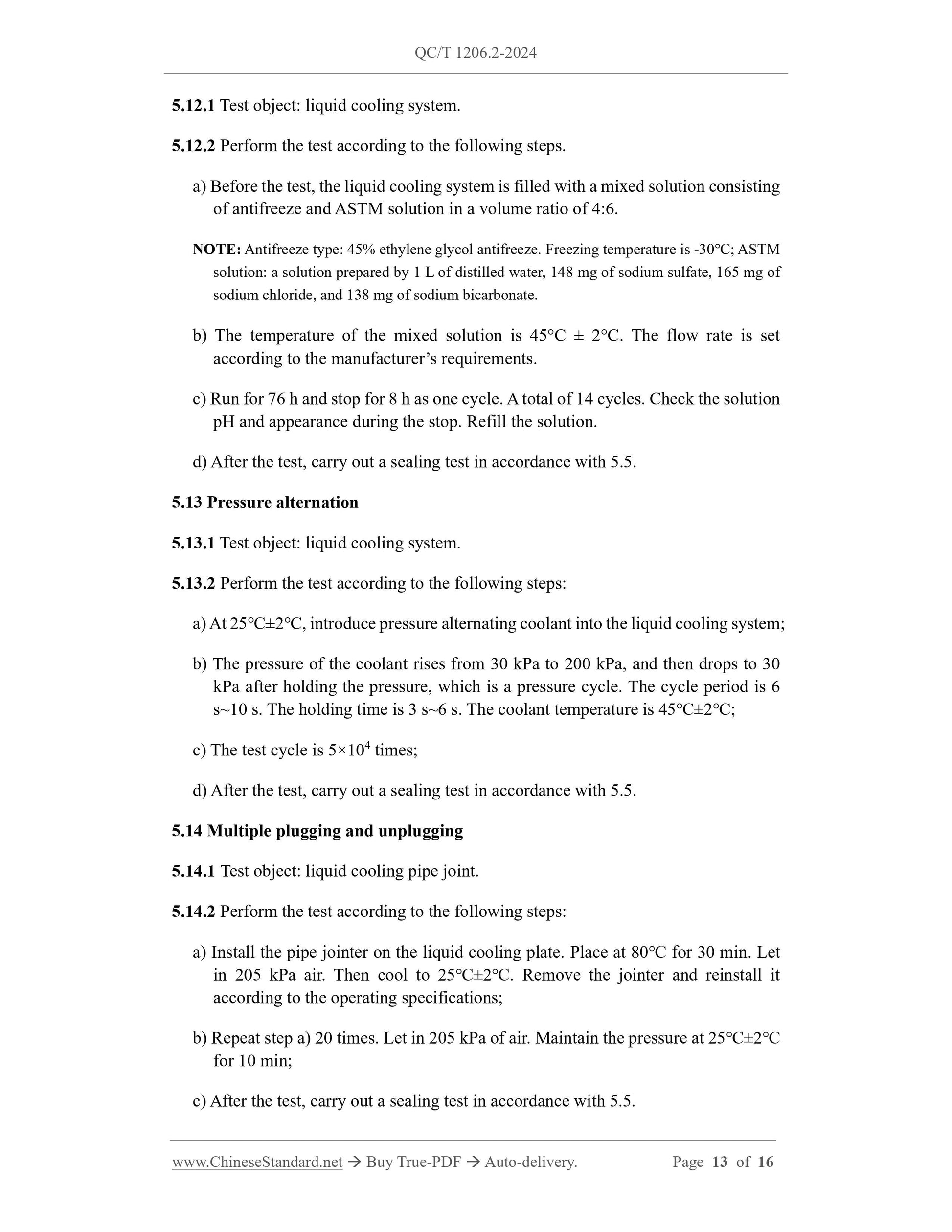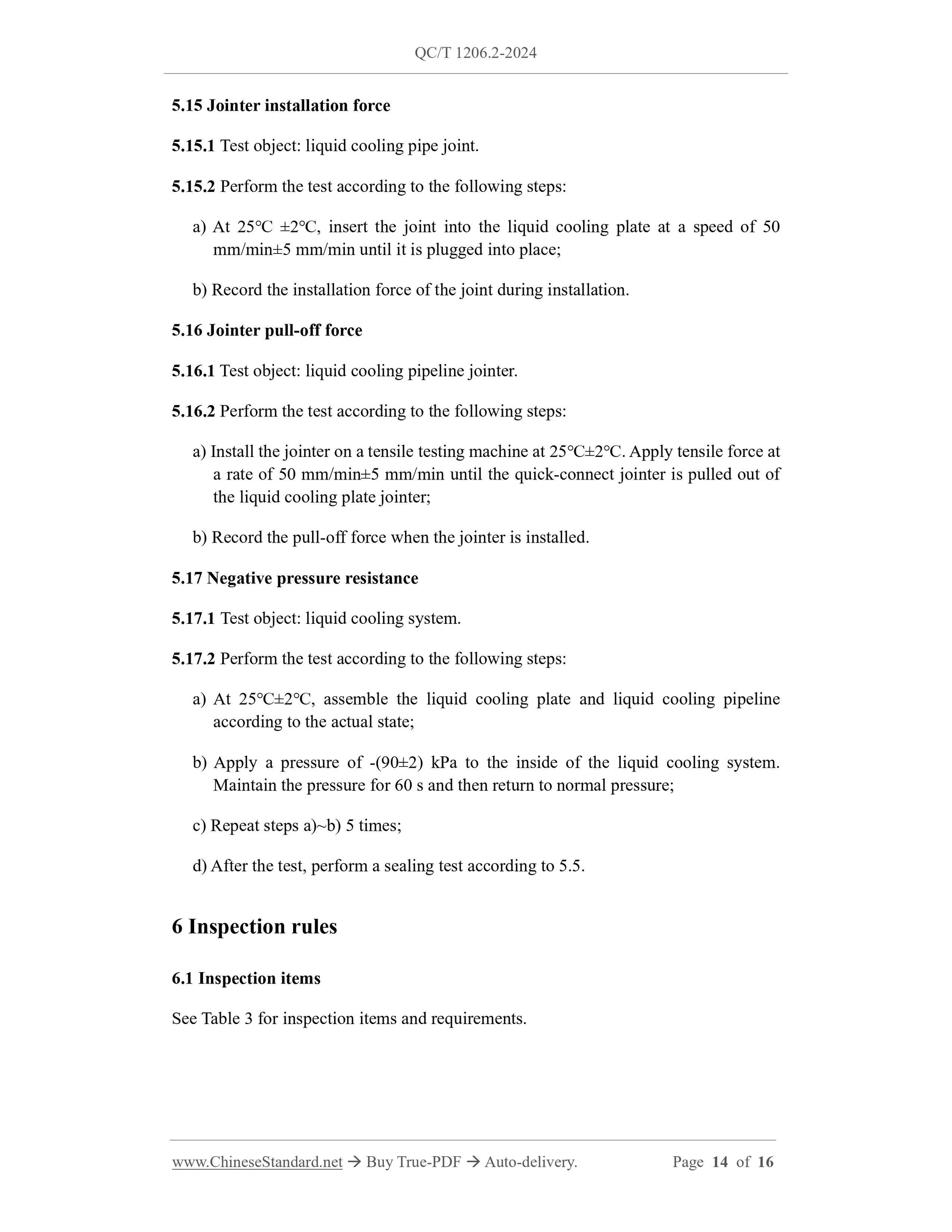1
/
of
7
www.ChineseStandard.us -- Field Test Asia Pte. Ltd.
QC/T 1206.2-2024 English PDF (QC/T1206.2-2024)
QC/T 1206.2-2024 English PDF (QC/T1206.2-2024)
Regular price
$155.00
Regular price
Sale price
$155.00
Unit price
/
per
Shipping calculated at checkout.
Couldn't load pickup availability
QC/T 1206.2-2024: Thermal management system for electric vehicle traction battery - Part 2: Liquid cooling system
Delivery: 9 seconds. Download (and Email) true-PDF + Invoice.Get Quotation: Click QC/T 1206.2-2024 (Self-service in 1-minute)
Newer / historical versions: QC/T 1206.2-2024
Preview True-PDF
Scope
This document specifies the technical requirements and test methods for liquid coolingsystems for electric vehicle power batteries (hereinafter referred to as "batteries").
This document is applicable to the research, development and testing of electric vehicle
power battery liquid cooling systems and their components.
Basic Data
| Standard ID | QC/T 1206.2-2024 (QC/T1206.2-2024) |
| Description (Translated English) | Thermal management system for electric vehicle traction battery - Part 2: Liquid cooling system |
| Sector / Industry | Automobile and Vehicle Industry Standard (Recommended) |
| Classification of Chinese Standard | T47 |
| Classification of International Standard | 43.12 |
| Word Count Estimation | 14,134 |
| Date of Issue | 7/19/2024 |
| Date of Implementation | 1/1/2025 |
| Issuing agency(ies) | Ministry of Industry and Information Technology |
Share
